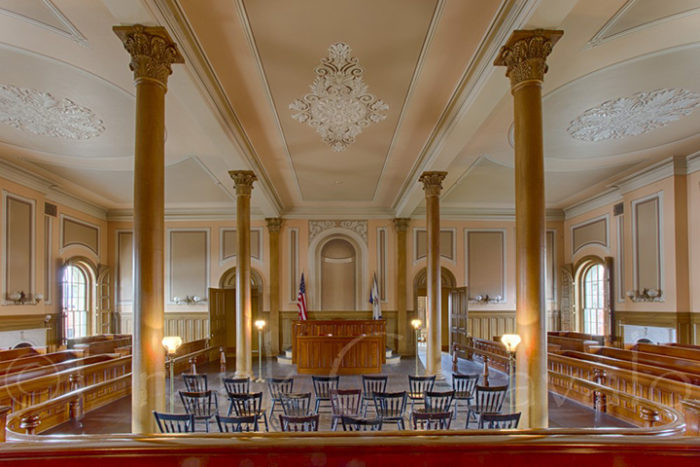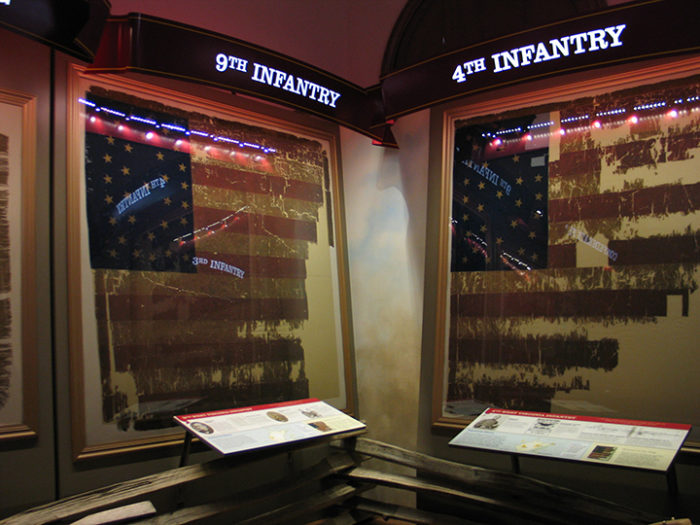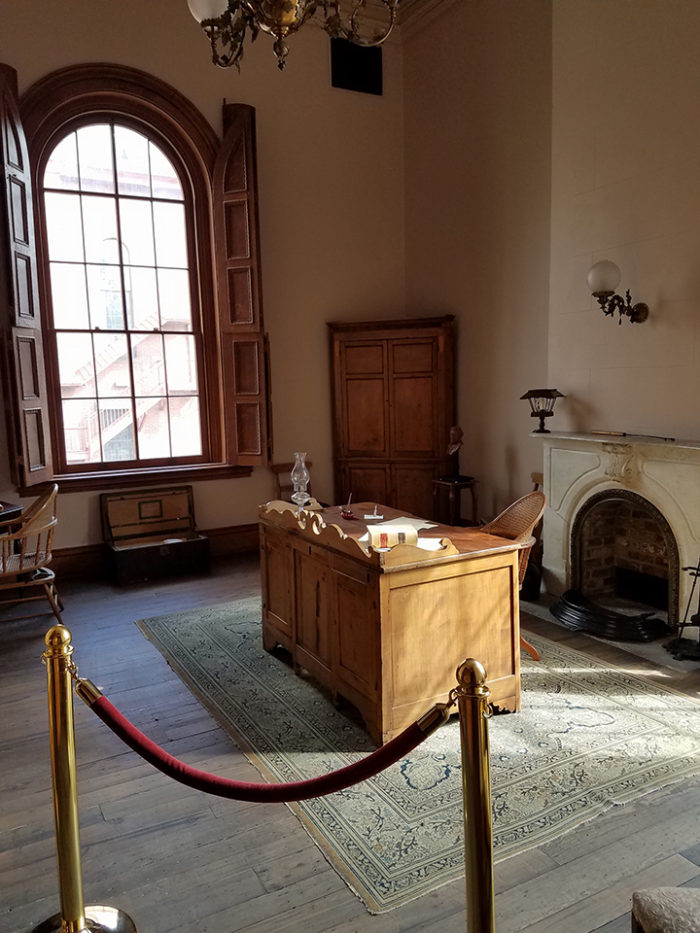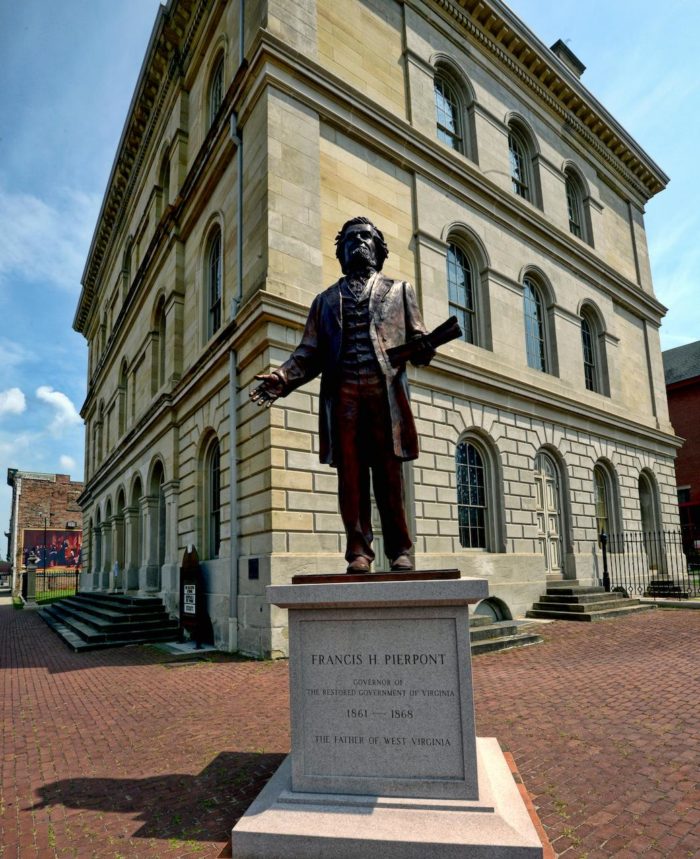
Operating Hours
Open Tuesday through Saturday
9:00 a.m. to 5:00 p.m.
Closed
Sundays and Mondays
Admission to the museum is free.
Contact
Main: (304) 238-1300
Deborah Jones, Site Manager
West Virginia Independence Hall
1528 Market Street
Wheeling, WV 26003
Birthplace of West Virginia
Governor Pierpont used this building as his office during the time of the “Restored Government of Virginia.” It was at his east window that he composed the telegram to President Lincoln urging him to sign the bill for West Virginia statehood. In December 1862, President Lincoln received the statehood bill for the creation of new West Virginia and on December 31, President Lincoln signed the bill and West Virginia achieved statehood on June 20, 1863.
Contrary to popular belief, Independence Hall was never the capitol of West Virginia. It was the capitol of the “Restored Government of Virginia” from 1861-1863. When WV became a state in 1863, the new Governor, Arthur Boreman, had his office in the building, but since the legislature was housed in what is now the Medical Arts Building on Eoff Street, that building is considered the state capitol for the period 1863-1869, when it then moved to Charleston.
The US government recognized the existence of the “Restored Government of Virginia” at the second Wheeling convention in 1861. The executive branch recognized the restored government when President Lincoln granted Governor Pierpont’s request for more troops. The legislative branch recognized the restored gov’t when the House of Representatives seated John Carlile, William Brown and Killian Whaley as congressman from the Restored Government. In 1861, the general assembly of the “Restored Gov’t of Virginia” elected Waitman Wiley and John Carlile as US Senators from Virginia. The U.S. Senate made this election legitimate when it replaced Senators Hunter and Mason with Wiley and Carlile.
Legislators not convinced of the constitutionality of the Restored Gov’t of Virginia” argued the legitimacy of seating Willey and Carlile. Delegates at the convention, however, felt that the state government in Richmond no longer existed due to succession, which left state positions vacant and that the people had the right to change a corrupt government. Recognition by President Lincoln and the federal government laid the groundwork for the legitimacy of the Restored Gov’t of Virginia and the western counties future bid for separation to form a new state. Faced with what the western citizens considered an overbearing and neglectful state government, citizens in the mountainous western regions of Virginia refused to take part in secession, –“the crowning of infamy”, thundered one politician from the west.
West Virginia Independence Hall is the site of the first West Virginia Constitutional Convention and the first and second Wheeling Convention. Wheeling is the only city to serve as the capitol of two states and West Virginia is the only state formed from the Civil War … a state born of conviction, a state born advocating for and defending the United States of America rather than the seceded states of America. Western Virginians were very committed to the Union in a state that left the Union, and Wheeling was the center of this rebellion.
Historical Architecture
The hand cut sandstone building opened in 1859 at a cost of $96,000 as the Wheeling Custom House, post office and federal court. It incorporated the city’s first convection system for “central heat” and flushing toilets. The facilities of the Custom House played a major role in the statehood movement by providing Federal military protection, a facility for heated political discussions and a space for meetings of the constitutional conventions. The building housed offices for the loyalists’ government for the “Restored Government of Virginia”, under the leadership of Governor Francis Pierpont. After President Abraham Lincoln’s assurance that the new West Virginia not only wanted his protection in their rebellion, but also strongly supported his stand against slavery, Lincoln signed the proclamation making West Virginia the 35th state on June 20, 1863.
In May 1964, the building was purchased by the State and West Virginia Independence Hall Foundation. By carefully following the architect’s original plans still on file in the National Archives, restoration began to restore West Virginia Independence Hall back to its original structure of massive 13-foot wooden doors, 12-foot windows, 20-foot ceilings and original and reproduction decorative ironwork. The National Park Service placed West Virginia Independence Hall on the National Register of Historic Places in 1970. In addition, the birthplace of West Virginia gained national recognition as a National Historic Landmark in 1988.
West Virginia Independence Hall is listed as a Heritage Site by the American Battlefield Trust. The Trust recognizes more than three-hundred sites in sixteen states that inspire and teach the story of the Civil War and its haunting impact on America. The American Battlefield Trust sites allow visitors to explore battlefields, historic homes, railroad stations, cemeteries, parks and other destinations that bring history to life. For more information on the American Battlefield Trust, visit them at battlefields.org.
Current Exhibitions
Currently, West Virginia Independence Hall has many exciting exhibits including 14 original Civil War battle flags, the original post office, Governor Pierpont’s and surveyor Hornbrook’s office and of course, our beautiful, restored court room. To see more of West Virginia Independence Hall’s exhibits, check out the Department of Arts, Culture and History’s photo gallery.
West Virginia Independence Hall hosts many lectures, school tours, programs, public forums, bus tours, meetings, and state agencies throughout the year. The West Virginia Independence Hall foundation sponsors Civil War programs including movies and re-enactments of various kinds. Today, there are many programs, events, meetings and causes in the works at West Virginia Independence Hall. One of our past efforts, completed in May 2019, included raising money to relocate the largest Civil War monument in the state to the side yard of West Virginia Independence Hall, the grand Soldiers and Sailors monument, dedicated in 1883 to the men who fought and died in the Civil War.
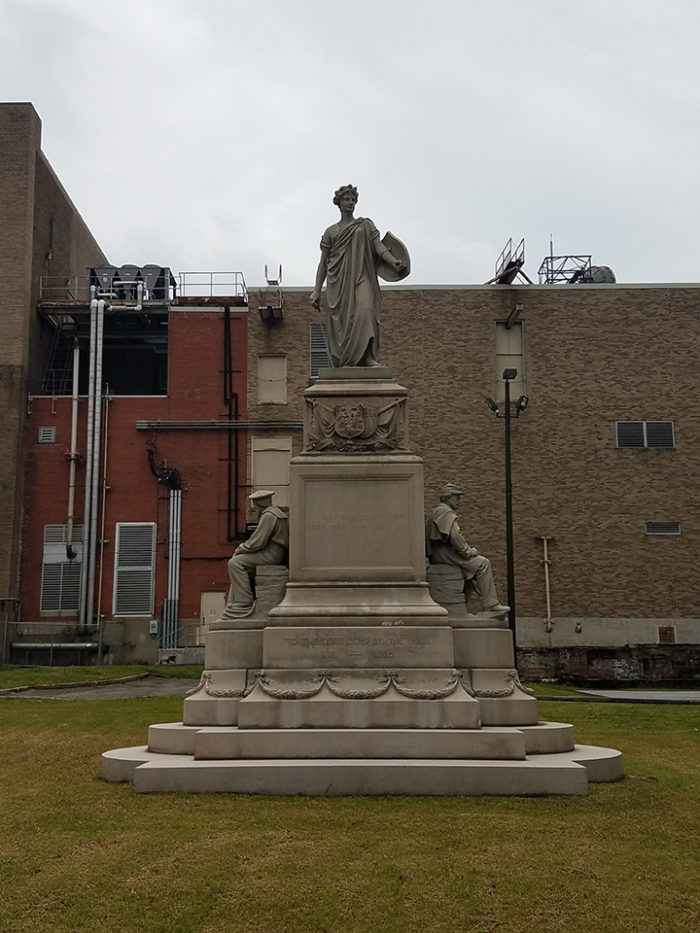
The museum is open Tuesday thru Saturday and admission is free. If you haven’t been to West Virginia Independence Hall, you are missing out on the history of the Civil War and the birthplace of the 35th state. After all, West Virginia Independence Hall is the most historic place in West Virginia!

